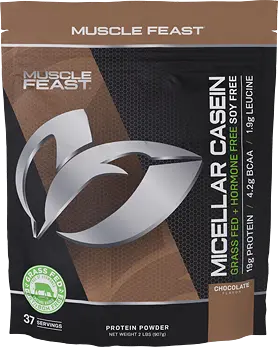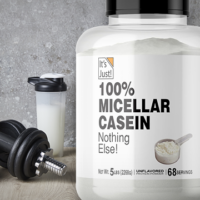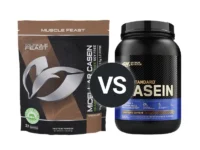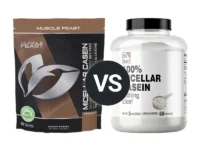Knowledge BaseYou're Questions Answered
Can you mix casein protein powder with water?
Casein protein powder is a popular supplement known for its slow-digesting properties, providing a sustained release of amino acids over time. It is often consumed before bedtime or during prolonged periods without food to support muscle recovery and maintenance. Mixing casein protein powder with water is a common method of preparation that offers several benefits and considerations.
Benefits of Mixing Casein Protein Powder with Water
1. Lower Calorie Option
Mixing casein protein powder with water instead of milk or other liquids is a lower-calorie option. This is beneficial for individuals looking to reduce their calorie intake, such as those on a weight loss plan. Water adds no additional calories, allowing the protein powder's calories to come solely from the protein content1.
2. Convenience and Accessibility
Water is easily accessible and requires no refrigeration, making it a convenient option for mixing with protein powder. It is especially useful for on-the-go situations or when access to other liquids is limited. Simply adding water to a shaker bottle with casein protein powder allows for quick and easy preparation.
3. Enhanced Digestion and Absorption
Mixing casein protein powder with water can sometimes be easier on the digestive system compared to milk, especially for individuals who are lactose intolerant or have dairy sensitivities. Since water contains no lactose or dairy proteins, it reduces the risk of digestive discomfort2.
4. Versatility in Flavor
Water has a neutral flavor, which allows the natural or flavored taste of the casein protein powder to come through. This can be particularly appealing if the protein powder is already flavored. Additionally, mixing with water can be a suitable base for adding other ingredients, such as fruits or flavor extracts, to customize the shake.
Considerations
1. Texture and Thickness
Casein protein powder tends to form a thicker consistency compared to other protein powders, such as whey. When mixed with water, the texture may be thinner than when mixed with milk. To achieve the desired consistency, the amount of water can be adjusted. Some people may prefer a thicker shake, while others may prefer a more liquid consistency.
2. Nutritional Content
Mixing casein protein powder with water does not add any additional nutrients, unlike mixing with milk, which provides calcium, vitamin D, and other nutrients. However, this can be an advantage for those who want to limit their intake of additional nutrients or calories.
- Boirie, Y., Dangin, M., Gachon, P., Vasson, M. P., Maubois, J. L., & Beaufrère, B. (1997). Slow and fast dietary proteins differently modulate postprandial protein accretion. Proceedings of the National Academy of Sciences, 94(26), 14930-14935.
- Heyman, M. B., & Abrams, S. A. (2007). Fruit juice in infants, children, and adolescents: Current recommendations. Pediatrics, 119(2), 405-406.
Related Questions

Your Answer
We are a participant in the Amazon Services LLC Associates Program, an affiliate advertising program designed to provide a means for us to earn fees by linking to Amazon.com and affiliated sites.






